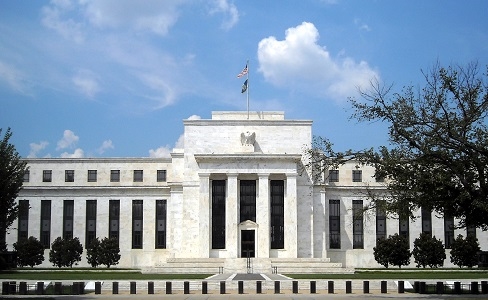ANALYSIS: ESTR futures at the centre of European rates market shift

Eurex hosted on June 13 a panel discussion which assessed the bifurcated European interest rate derivatives markets, examining the progress made in building liquidity in contracts referencing its risk-free rate.
In its growing short-term interest rate futures complex, Eurex's relaunched Euribor contract reported 2.2 million futures traded in May while 2.4 million contracts traded on its euro short term rate (ESTR) future, launched in April last year. The German firm is one of three exchanges vying for market share in different portions of the European short-term market, and at the start of April introduced changes to its incentive scheme to support liquidity in the short end of the curve.
“In terms of ESTR and Euribor we have been pleasantly surprised with the volume development so far,” said Lee Bartholomew, global head of fixed income and currencies product design at Eurex. “If you look at ESTR we have a market share north of 50% in terms of volume, open interest has continued to climb and on June 12 we went through 100,000 so we are nicely building out the market share. Euribor, while it is not secondary, is still at a stage where we need to build a viable alternative to the incumbent. So what you have seen is a consistent build on the average daily volume (ADV) side and then the same on open interest but it has just not been on the same scale as ESTR.”
Euribor futures ADV at Eurex in May stood at 99,297 contracts in May, compared to 1.2 million lots at incumbent Intercontinental Exchange (ICE). In the ESTR market, however, Eurex traded 107,628 lots compared to ICE’s 54,801 lots, according to figures published by both exchanges. Bartholomew believes the nature of the liquidity building positions it for further growth and ESTR options.
“We need to build liquidity in a consistent fashion, so what we are seeing since April is a tightening of spreads, deeper liquidity from levels one to five in the order book,” he added. “We are seeing a nice healthy switch from strategy trading and outrights so the build is managed to a large extent. Now what we will see hopefully into Q3 will be the taker flow leaning into the liquidity, and then from there we can get to the next milestones of 200,000, 300,000 in volume. For me, once we have that liquidity down the expiries on the open interest, we can then look at options.”
Pascal Souchon, head of rates trading at LBBW, agreed the expansion of the short-term interest rate (STIR) liquidity programs had helped foster activity in its first months.
“From the sell-side perspective, we are seeing overall positive sentiment and more interest in the market for short-term interest rate future, and acceptance of that contract,” he said. “To be honest we would like to have seen that develop more quickly, but the market is adopting and using the future as a hedging instrument and for risk management.
“That is partly due to the positive effect that the STIR programme is bringing into the market, supporting liquidity and the depth of the market. When I look at Euribor and the fixing process, that is certainly not optimal and that might draw more focus on the ESTR future as well.”
The deputy head of flow rates derivatives at UniCredit said the markets referencing the two rates were at different stages of development.
“In general, we are seeing two different patterns regarding the ESTR and Euribor future markets,” Carlo Maria Sironi said. “That is only because on the ESTR side the industry was starting from scratch, so it is more tentative and early in the process. As a result, in absolute terms it's fair to say it's still lagging behind, but if you think about it in relative terms considering where we started, liquidity is looking very good.
“When I’m looking at Euribor, it's clear the liquidity provider program has created a strong boost, starting from this month and it is being used more widely based on the feedback we are receiving from our clients. My view is that Euribor will stay with us for a long time, I would not be surprised to see some sort of reform emerges encouraging liquidity in different tenors of Euribor.”
While rivals ICE and CME Group have both listed options on their ESTR futures already, Bartholomew said Eurex is taking time to develop the ecosystem of participants before launching its own version.
“In Europe right now the sell-side is happy for Euribor to coexist with ESTR,” he said. “In order to scale up the ESTR side I think you need options, and you need market-makers making prices in the OTC market but there isn’t the impetus or the push to do that right now. So what you will see unless you get a clear steer from the regulator around cessation, I think you will see the two rates coexist. I’d question why Europe sees the two rates coexisting in the longer term. For me, I think the regulator should push for ESTR and then you will see a like for like with the US and UK.”
The adoption of ESTR by relative value funds could be the beginning of a virtuous cycle that will eventually lead larger macro funds to the market, he added. Sironi agreed the competing trading behaviours of banks and the buy-side would be a crucial conflict for the market to resolve as it goes forward.
“There is currently a type of market structure strain in the market,” he said. “On the one hand you have treasury desks at banks which strongly prefer trading on the ESTR in the OTC market – that part of the market need the liquidity and to reflect specific contract terms. At the same time, there are big chunks of the rest of the market – mainly hedge funds and other asset managers which are strongly in favour of this type of futures product. It's not clear to me exactly how these two forces pushing against the market will play out, but it is clear there has been a boost in the short term from hedge funds and market makers/dealers.”
Found this useful?
Take a complimentary trial of the FOW Marketing Intelligence Platform – the comprehensive source of news and analysis across the buy- and sell- side.
Gain access to:
- A single source of in-depth news, insight and analysis across Asset Management, Securities Finance, Custody, Fund Services and Derivatives
- Our interactive database, optimized to enable you to summarise data and build graphs outlining market activity
- Exclusive whitepapers, supplements and industry analysis curated and published by Futures & Options World
- Breaking news, daily and weekly alerts on the markets most relevant to you



